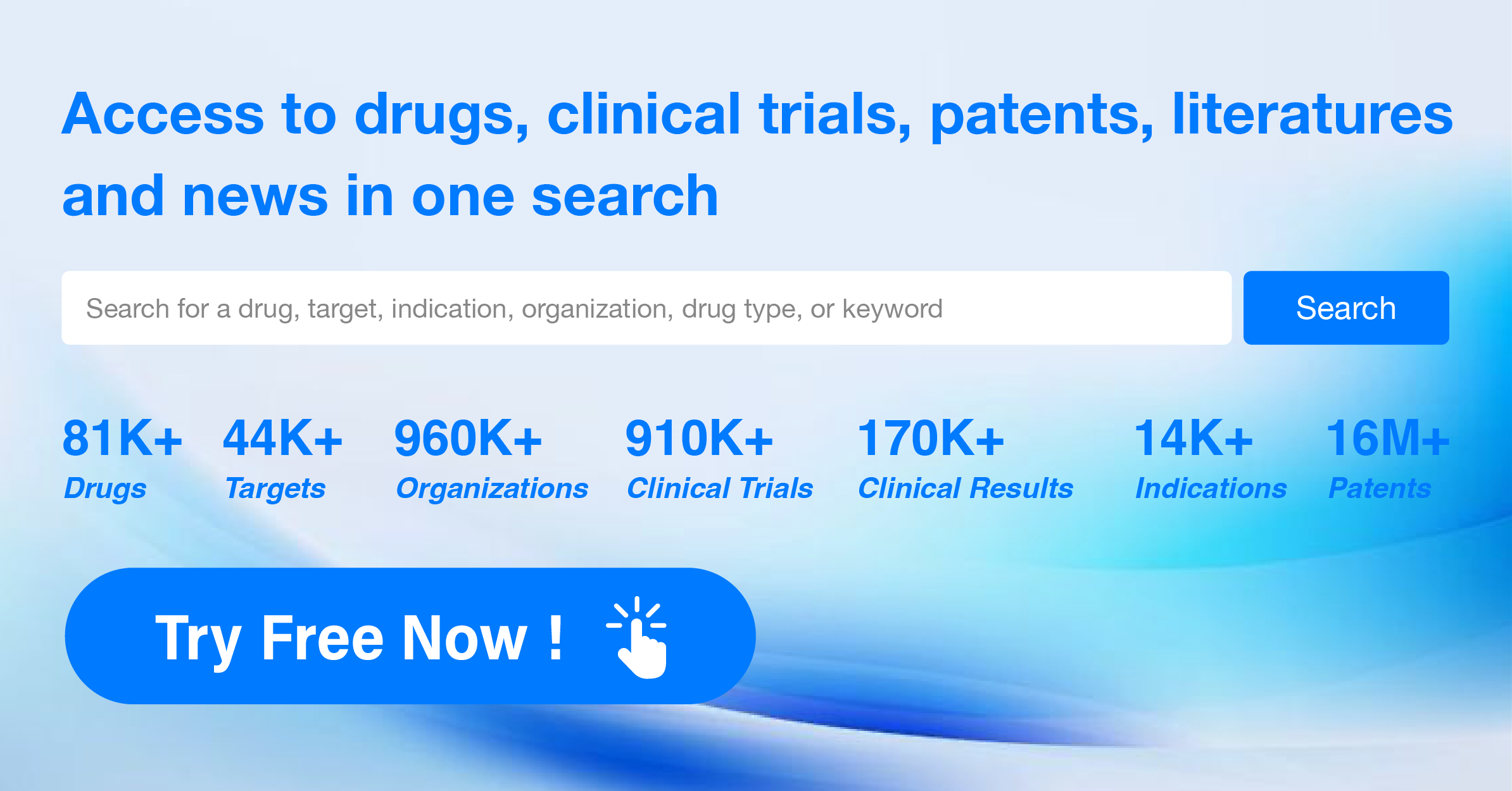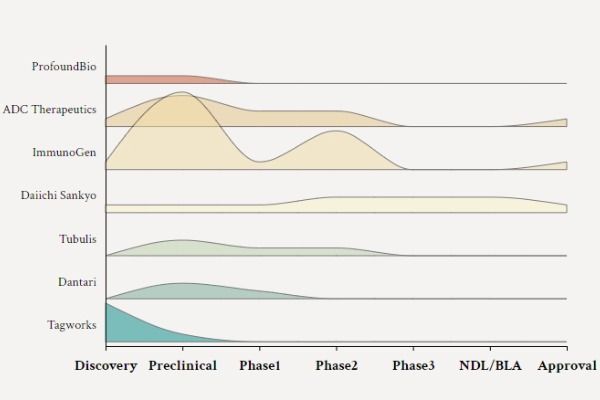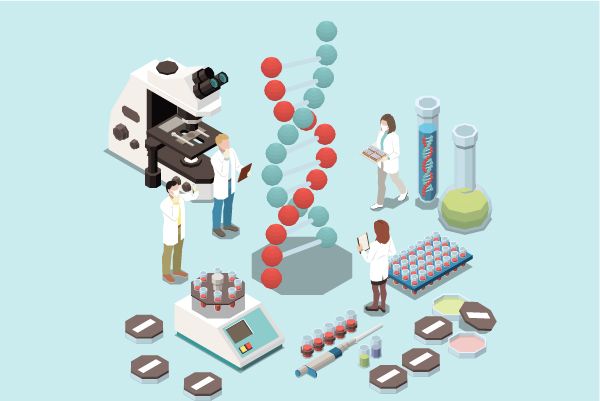Pharma Frontiers: Daily Digest of Global Pharmaceutical News - April 23
1.Kintor Pharmaceuticals' GT20029 Phase II Clinical Study Achieves Primary Endpoint
On April 21, Kintor Pharmaceuticals announced that its independently developed novel Proteolysis Targeting Chimera (PROTAC) compound, GT20029, aimed at targeting the androgen receptor (AR), has achieved the primary endpoint in its Phase II clinical trial in China for the topical treatment of male androgenetic alopecia. The results demonstrated statistical significance and clinical relevance, along with good safety and tolerability profiles. According to a Kintor Pharmaceuticals press release, based on the results of the Phase II trial, the company will actively plan further clinical strategies for GT20029, such as initiating Phase III clinical trials in China and Phase II clinical trials in the United States for male hair loss, and is also preparing to conduct Phase II clinical trials for the treatment of acne. As introduced in the press release, GT20029 is a novel topical AR degrader that recruits AR proteins to E3 ubiquitin ligases for degradation. Preclinical studies have shown that it can effectively block the activation of the AR signaling pathway that causes follicular miniaturization and atrophy, thereby inhibiting hair thinning, softening, and loss. It also effectively suppresses the development of sebaceous glands and sebum secretion. Additionally, GT20029 acts locally in peripheral skin tissues, avoiding systemic drug exposure and reducing the sensitivity of local hair follicle sebaceous glands to androgens, which is why it is being developed to treat hair loss and acne. The study reaching the primary endpoint is a multicenter, randomized, double-blind, placebo-controlled Phase II clinical trial that aims to assess the efficacy and safety of GT20029 solution in treating male hair loss and to determine the recommended dosing regimen for Phase III clinical trials. The trial was conducted across 12 centers in China, with its primary efficacy endpoint being the average change in the number of terminal hair counts (TAHC) within the target area from baseline after 12 weeks of treatment compared to placebo. Safety assessments included adverse events, laboratory tests, subjective evaluations of topical medication, and evaluations of skin lesion presentation.
2.CanSino Biologics' innovative pneumococcal vaccine PBPV achieves positive preliminary results in Phase I
On April 21st, CanSino Biologics announced that the Phase I clinical trial (including Phase Ia and Ib stages) of the Recombinant Pneumococcal Protein Vaccine (referred to as "PBPV") has yielded positive preliminary results. PBPV is a globally innovative pneumococcal vaccine under development that primarily utilizes antigens based on Pneumococcal surface protein A (PspA), a highly conserved protein expressed by almost all strains of pneumococcal bacteria. Compared to the currently available PPV23 and PCV13, PBPV has a higher serum coverage rate (covering at least 98% of pneumococcal strains). Unlike the current 23-valent pneumococcal polysaccharide vaccine (referred to as "PPV23") and the 13-valent pneumococcal conjugate vaccine (referred to as "PCV13"), which are serotype-specific vaccines, PBPV can effectively prevent "serotype replacement" due to its high coverage rate protection. In addition, compared to polysaccharide vaccines and conjugate vaccines, this product has a simpler manufacturing process, which is easier to scale up and quality control. The company conducted a preliminary evaluation of the safety and immunogenicity of PBPV in healthy adults aged 18-49 through a randomized, double-blind, placebo-controlled Phase Ia clinical trial. Also, a preliminary evaluation of the safety and immunogenicity of PBPV in adults aged 50 and above was carried out through a randomized, blind-method, positive-controlled Phase Ib clinical trial. The results of the Phase Ia and Ib clinical studies indicated that PBPV has a good safety profile in both adult and elderly populations, with no Grade 3 adverse reactions or special safety risks observed. Additionally, a single dose induced significant levels of conjugate antibodies and functional bactericidal antibodies against cross-family/subtype Streptococcus pneumoniae, further demonstrating the broad-spectrum potential and public health value of this candidate vaccine.
3.Postpartum depression risk drops by about 75% within 42 days! Hengrui Pharmaceuticals' esketamine published in the BMJ
On April 20th, Hengrui Pharmaceuticals announced that its study on the prevention of postpartum depression using esketamine was published online in one of the world's leading medical journals, the British Medical Journal (BMJ). The study demonstrated that for mothers with antenatal depressive symptoms, an immediate post-delivery intravenous infusion of a low dose of esketamine (0.2mg/kg) could reduce the risk of postpartum depression by approximately three-quarters (75%) at 42 days postpartum. Depression is a common mood disorder among perinatal women. Perinatal depression can negatively impact both the mother and the newborn and may even affect the long-term cognitive and behavioral development of the offspring. Esketamine, commonly used as an anesthetic and analgesic medication during the perioperative period, is also approved for the treatment of treatment-resistant depression. However, its effect on perinatal depression was not clear. The study published in the BMJ was a multicenter randomized controlled trial conducted in five-tier III hospitals in China. The primary endpoint was the prevalence of depressive episodes at 42 days postpartum, diagnosed using the Mini International Neuropsychiatric Interview 6.0.0. Safety outcomes included the incidence of neuropsychiatric symptoms following administration, among others. The findings revealed that the incidence of depressive episodes at 42 days postpartum in the esketamine group (6.7% [12/180]) was significantly lower than that in the control group (25.4% [46/181]), with a risk ratio of 0.26, indicating a substantial reduction in the risk of depression by about three-quarters. The risk of persistent pain decreased by about one-quarter. Adverse reaction symptoms were transient and self-limiting, requiring no pharmacological intervention. Furthermore, the study found that the Edinburgh Depression Scale scores of the esketamine group were lower at both 7 and 42 days postpartum, and their Hamilton Depression Rating Scale scores were also lower at 42 days postpartum. According to a press release from Hengrui Pharmaceuticals, this study provides a new perspective and method for the prevention and treatment of perinatal depression, which is expected to change the clinical management model for these patients, reducing the incidence of postpartum depression through preventative treatment.
4.For Brain Tumor Diagnosis! Yao Ming Bo Rui Biotechnology Launches Phase 1 Clinical Trial of Novel Radioactive Drug
On April 20th, Yao Ming Bo Rui Biotechnology announced that it has initiated Phase 1 clinical trials for the first participant using its independently developed Positron Emission Tomography (PET) tracer [18F]BF3-BPA Injection, for the diagnosis of primary and metastatic brain tumors. Yao Ming Bo Rui Biotechnology is an innovative pharmaceutical company specialized in the development of Radiopharmaceuticals for Diagnostic and Therapeutic use (RDC), with a focus on precise cancer diagnosis and treatment. The company completed nearly 300 million yuan in Series A funding in 2022 and has multiple in-development radiopharmaceuticals for both diagnostic and therapeutic purposes. According to a press release from Yao Ming Bo Rui, [18F]BF₃-BPA is a novel amino acid analog designed for use in PET scans to diagnose primary and metastatic brain tumors. This product can specifically accumulate in tumor tissues and has lower uptake in normal brain tissue, providing a clear contrast between tumor lesions and normal brain tissue with a high tumor-to-brain ratio. It is expected to overcome the limitations of the commonly used glucose-based PET imaging agents in diagnosing brain tumors. The main objective of the Phase 1 clinical trial is to evaluate the biodistribution, pharmacokinetic characteristics, and safety of the [18F]BF3-BPA Injection in humans. The study plans to enroll 10 participants.
5.Shijian Biotechnology's ESG401 (Trop-2 ADC) Granted Approval to Initiate Pivotal Phase 3 Clinical Trial
Recently, Shijian Biotechnology announced that its ESG401 (Trop-2 ADC) has received approval from the NMPA's Center for Drug Evaluation (CDE) to commence a pivotal registration-phase 3 clinical trial for the indication of HR+/HER2- metastatic breast cancer in patients who have progressed on or are unsuitable for endocrine therapy and have previously undergone at least one line of systemic chemotherapy in the metastatic stage. This decision is based on the overall excellent safety data from the ESG401-101 and consistent safety and highly competitive efficacy data obtained from the phase Ib trial for the same indication. ESG-401 is Shijian Biotechnology's leading ADC candidate in the clinical phase and utilizes an innovative, stable, and degradable linker that significantly reduces off-target toxicity. Clinical data suggest that ESG-401's tolerable doses are much higher than other ADCs targeting the same marker, with a lower incidence and milder severity of off-target and on-target toxicities, conferring a distinct safety advantage. This results in increased ADC therapeutic doses and in vivo exposure, demonstrating encouraging effectiveness in patients with late-stage, multiple-line, pre-treated triple-negative breast cancer as well as HR+/HER2- metastatic breast cancer patients who have progressed on or are unsuitable for endocrine therapy and have experienced at least one line of systemic chemotherapy during the metastatic stage. It has also shown clear visceral metastasis treatment benefits and outstanding cerebral metastasis therapeutic effects. Concurrently, the dose-expansion trial of ESG401 as a monotherapy for first-line triple-negative breast cancer has also accumulated a higher Objective Response Rate (ORR) than the corresponding ADC competitor combined with immune checkpoint inhibitors.
6.Wondfo Biotech's Respiratory Triplex Assay Granted FDA EUA Authorization
Recently, Wondfo USA Co.,Ltd, a wholly-owned subsidiary of Wondfo Biotech in the United States, received notification from the U.S. Food and Drug Administration (FDA) that its WELLlife COVID-19/Influenza A&B Test, designed for the simultaneous detection of the novel coronavirus, influenza A virus, and influenza B virus, has been granted Emergency Use Authorization (EUA) by the FDA. Respiratory viral infections caused by influenza A, influenza B, or novel coronavirus can present with similar clinical symptoms. In order to distinguish respiratory infections caused by different viruses and provide targeted treatment, testing products capable of detecting and differentiating the causative viruses are necessary. The FDA has opened an EUA pathway to address the high prevalence of seasonal respiratory infectious diseases in the United States. The WELLlife™ COVID-19/Influenza A&B Test from the U.S. subsidiary successfully completed performance and clinical validation in the United States and has now received FDA EUA authorization. Intended for anterior nasal samples collected within 5 days of symptom onset, this product is able to qualitatively detect and differentiate between influenza A, influenza B, and novel coronavirus infections.
7.Ipsen collaborates with Skyhawk to develop small molecule compounds
On April 22nd, Ipsen announced a global exclusive collaboration agreement with Skyhawk Therapeutics to discover and develop novel small molecules for modulating RNA in rare neurological diseases. The agreement includes an option allowing Ipsen the right to obtain global exclusive development rights for successful Development Candidates (DCs). Following successful identification of a DC, Ipsen will be responsible for subsequent development efforts. Per the terms of the agreement, Skyhawk is eligible for up to $1.8 billion in development, regulatory, and commercial milestone payments, including upfront payments for the option and research collaboration, as well as potential tiered royalties. Skyhawk's proprietary platform has accelerated the development of RNA-targeted small molecules across multiple therapeutic areas, including rare neurological diseases. The SKYSTAR technology platform is a target assessment system that integrates data from public information and specialized bioinformatics, structural, and computational biology datasets to prioritize high-value RNA targets. Skyhawk has screened over 700 pharmaceutical targets using this platform. SKYLIBRARY technology platform is a custom, rapidly expandable library of RNA-targeted compounds. The SKYSEQ technology platform is a multiplex screening system capable of testing dozens of high-value targets across a range of RNA motifs simultaneously to identify compounds selective for specific disease targets. Lastly, the SKYAI technology platform is a machine learning tool that integrates data from SKYSTAR, medicinal chemistry, animal studies, tox data, and clinical programs to drive the development of the next generation of novel RNA splicing modulators.




